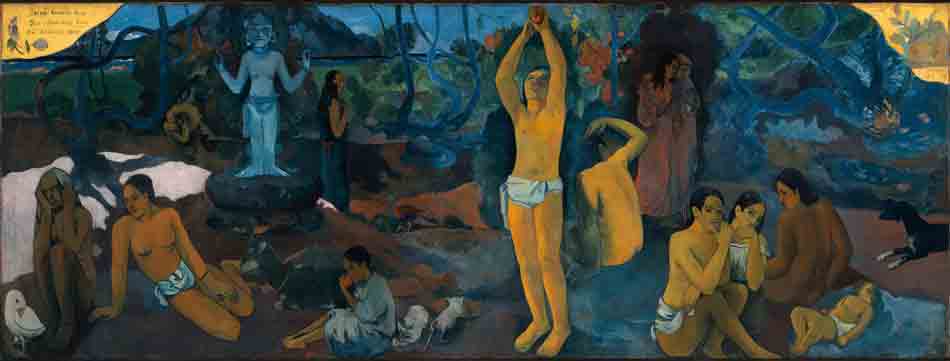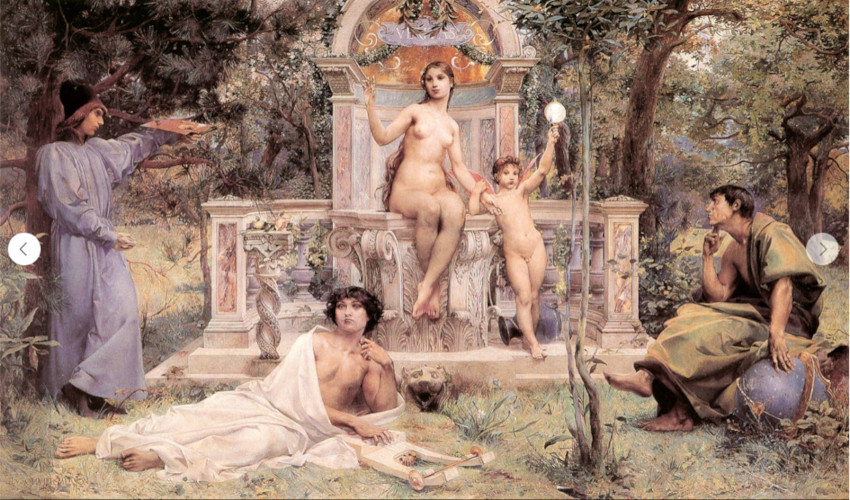
kunstgenoegens.nl
Psychologie / Filosofie
Paul Gaugin, (Fr, 1848-1903)
Geschilderd op het eiland Punaauia, Frans Polynesië (Tahiti), 1897-8
D'où venons nous ? Que sommes nous ? Où allons nous ? / Waar komen wij vandaan ? Wat zijn wij ? Waar gaan wij naar toe ?
(klik voor een vergroting)
This is Paul Gaugin’s most famous painting, and he considered it his masterpiece, and the culmination of his thoughts. In Tahiti, as he was painting his masterpiece, Gaugin declared that he would commit suicide upon its completion. Although this was something he had previously attempted, this was not the case, as the artist died of syphilis in 1903. The painting was meant to be read from right to left, with the three main figures in the painting representing the three questions of the title. The figures are arranged from the beginning stages of life, from young figures with a child, to the middle aged figure in the middle, to the elder figure on the left of the painting. The idol in the background, situated behind the elder figure, represents the “Beyond.”
(bron: Wikiart, 8-7-20180)
De geschiedenis en betekenis van dit schilderij wordt met fraaie detailfoto's uitgebreid beschreven door Khan Academy
Bekijk voor verdere uitleg over dit schilderij een film op Youtube (kleuren zijn helaas erg lelijk)
klik op de foto voor een vergroting
Henri Matisse: Le bonheur de vivre (het geluk van het leven), ca. 1905-1906
Francis Danby ( (1erland 1793 - Londen 1861), Disappointed love, 1821
Victoria and Albert Museum, Londen
Paul Gaugin, (Fr, 1848-1903)
Tahiti, 1892, 101,5 x 77,5
Begin 2015 werd het werk, dat bijna een halve eeuw lang was uitgeleend aan het Kunstmuseum Basel, door de Zwitserse eigenaar verkocht aan de emir van Qatar voor 210 miljoen Amerikaanse dollar.

Luc-Olivier Merson, (Fr., 1846-1920)
La Vérité - De Waarheid
olie op doek, dat gelegd is op pleisterwerk, 221 x 372 cm., Musée d'Orsay, Parijs.
Jane Fsher (USA, b. 1961)
Woman on underwater steps (olieverf)
Iemand schreef bij dit schilderij: We don't see things as they are, we see them as we are (Anais Nin)
Catharina Nieuwenhout (geb. 1961),
Wedergeboorte
Het beeld van “een mens met vleugels” is een metafoor voor : ”de vrijheid om op eigen kracht een ander standpunt op te zoeken.”
(collectie HHvdM)
Hiervan zijn verschillende afdrukken, die elk een beetje anders zijn